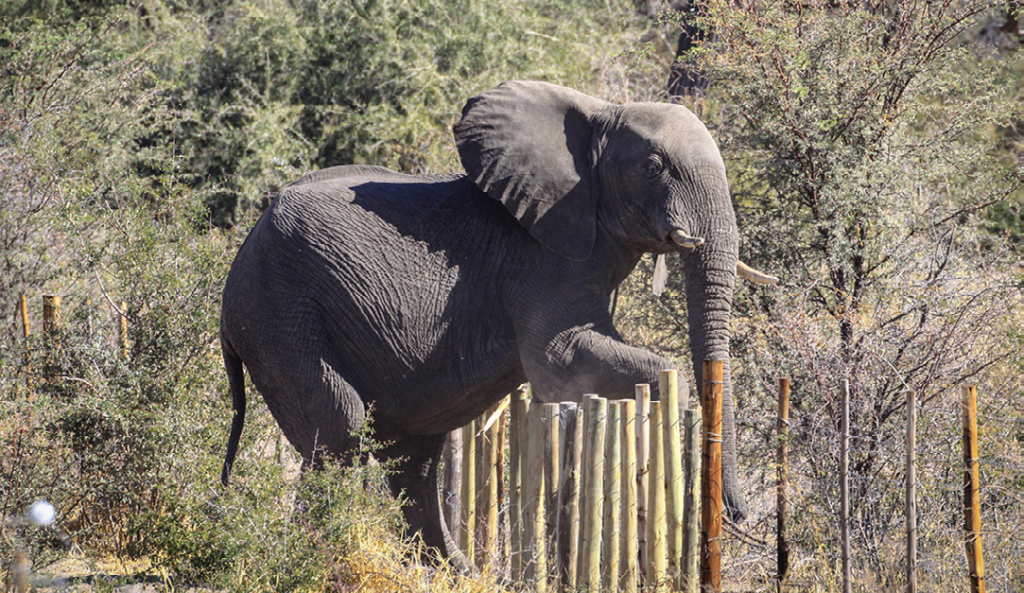Zimbabwe is endowed with abundant natural resources including wildlife resources of all kinds. It is famously known to be a wildlife destination for the Big Five (Elephant, Buffalo, Leopard, Rhino and Lion). Wildlife plays an important role in the Gross Domestic Product (GDP) of the country through tourism, a key sector of the economy. Directly and indirectly, tourism contributes to the livelihoods of local communities living in and around wildlife areas.
For these local communities, not all is rosy as they have to pay the price of living with wild animals. The way a tourist perceives wildlife is different from how a local person views it as they are constantly in conflict with wildlife. In the perspective of a local person, living with wildlife might a nightmare because most wildlife can cause environmental damage, destruction of property and livestock as well as disrupting agricultural fields of local people. This is a phenomenon commonly known as Human-Wildlife Conflict. In addition, wildlife poses safety risks to human beings who can be killed when they encounter some of the wildlife species. Many stories have been told of people who have been killed by some wildlife species or have been trampled to death.
Human-Wildlife Conflict is not only a problem in Zimbabwe, but also a challenge in many parts of the world. It occurs when there is coexistence of humans and wildlife sharing the same space and resources. There tends to be conflict because the needs and behaviour of wildlife negatively impacts on human goals resulting in inter specific competition for shared resources. It was then recognized that due to this conflict, local communities must have a share of the resources and also benefit from the wildlife in their area in order to minimize the impacts of HWC on household income and increase the tolerance of people towards wild animals. One way of achieving this is through Integrated Conservation and Development Projects (ICDPs) also commonly referred to as Community Based Natural Resources Management (CBNRM).
ICDPs aim to make communities bearing the costs of living with wildlife actually gain a sense of ownership of the resource through benefiting both indirectly and directly therefore recovering losses of property from HWC. An example of ICDPs is CAMPFIRE and the goal of this initiative is to increase the tolerance of communities by changing their attitude to be more favourable by supporting certain levels of conflicts. It also seeks to get local communities to actively participate in the conservation and management of the natural resources in their areas. However the success of these CBNRMs initiatives has been highly contested.
Over the past years, there has been an increase in HWC as a result of the exponential population growth of both people and wild animals, agricultural expansion. The increase of HWC has been the major deterrent for CBNRM because the amount of damage and destruction of property caused by wild animals now far exceeds the benefits accrued from the projects. A new menace called climate change has also come to the party, adding more stress to the already overburdened CBNRM programme.
Climate change is fast becoming a catalyst in the encroachment of wildlife habitats by humans and vice-versa. The shifting of seasons as a result of climate change is negatively affecting agricultural activities and production. Decreased agricultural production increases human dependency on natural resources, which leads to encroachment into wildlife habitats by human beings, thereby increasing HWC.
The decline in the natural resources base intensifies competition between people and animals. Climate change affects local economies of communities, leading to poverty and poverty increases illegal activities such as poaching and poaching increases risks to wildlife attacks which increases cases of HWC. Lastly, the increased frequency of extreme weather conditions such as flooding and drought can result in the migration of people towards protected areas where resources such as firewood are readily available. Some scientists argue that climate change can reduce HWC as it causes death of a lot of animal species through increased extreme weather events. However, other studies have proved that climate change has a big hand in the increase of HWC.
Climate change adaptation in Zimbabwe has been focusing mostly on agriculture, yet a significant portion of districts in agro-ecological regions not suitable for agriculture, rely on wildlife as a source of livelihood. It is now being recognised that natural resources play an important role in the livelihoods of rural communities. Therefore, adaptation projects are now being extended to cover natural resources such as Non-Timber Forest Products (NTFPs).
An example of such initiatives is the Zimbabwe Resilience Building Fund projects aimed at enhancing the adaptive capacities of rural communities through commercialization and utilization of NTFPs. Such projects need to be extended to wildlife based areas.
ICDPs are under threat from climate change through the increase in HWC. Therefore there is an urgent need to come up with innovations which are aimed at increasing the adaptive capacity to prevent the collapse of CBNRM in areas in which local economies are dependent on wildlife. We must be proactive now rather than being reactive later, if we are to prevent further damage from being done.

Balancing the needs of humanity and wildlife is essential in order to strike a peaceful co-existence. In the quest for sustainable development, there is an urgent need to address Human Wildlife Conflict.